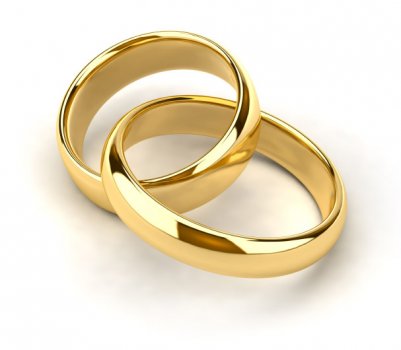A few months ago I had the opportunity to plan a liturgist‘s wedding liturgy. He and his bride preferred to celebrate the wedding without Mass for several reasons:
Some of the attendees would be non-Catholic Christians. Celebrating Eucharist would raise major canonical and pastoral issues. The congregation would be divided into different groups instead of being built up as one body: Those who are permitted to receive Communion, those who are excluded from Communion; those who know about the canonical rules but do not care, those who would discuss this for the entire day, and those who do not understand what it is all about and why the Catholic Church is always so complicated.
Some of the attendees would be Catholics who are familiar with Mass and the Rosary but nothing else. It would be a chance for them to experience other parts of the liturgical treasury, such as the Liturgy of the Hours, which bride and bridegroom celebrate regularly in their hometown.
Some the attendees were not familiar with liturgy at all. The complex Eucharistic rites and symbols and gestures and texts would make no sense to them in the context of a wedding.  They would not understand why it takes such a long time after the wedding vows and the blessing before one can eventually congratulate the happy couple and let all the kids run around after the entire boring act that makes it so tough for them to stay quiet and observant.
They would not understand why it takes such a long time after the wedding vows and the blessing before one can eventually congratulate the happy couple and let all the kids run around after the entire boring act that makes it so tough for them to stay quiet and observant.
Last but not least: A deacon was appointed to preside and preach – obviously this was the ultimate reason why there could be no Mass.
Since the wedding was scheduled for 11 a.m. on a Saturday, the Hour of Sext (Sixth Hour) seemed to be the right choice to use as a framework for the celebration. So the Liturgy of the Hours would be combined with the celebration of Matrimony. The order of service would be as follows: The opening rite, a hymn (on Matrimony—there is a beautiful one in the new 2013 edition of the German hymnal Gotteslob), three psalms (we chose 8, 121, and 145b), a reading (John 2:1–11, the Wedding at Cana, which is by the way the Gospel reading in any Byzantine Wedding), the homily, then the ceremony of Matrimony itself up to the concluding rites. You might call it “Sext with Wedding”, such as many monasteries and a few parishes might celebrate “Lauds with Eucharist” or “Vespers with Eucharist”. There are many models in history of how the Liturgy of the Hours can be combined with other liturgies. The Roman Easter Vigil is a combination of Vigils + Baptism + Eucharist. The Byzantine Presanctified Liturgy is Vespers + Communion. Switzerland knows a rite for Lauds (or Vespers) + Liturgy of the Word, especially on Sundays when there is no priest for Mass. The General Instruction for the Liturgy of the Hours gives exact explanations of how an Hour can be combined with Eucharist, or two Hours with one another.
What surprises me is that the Catholic Church does not provide an order for a wedding in combination with the Liturgy of the Hours. The liturgical books do not even mention that option. What I found instead was this: When a wedding takes place in a Liturgy of the Word (outside of Mass), the biblical readings do not have to follow the same order as in Mass. So my inner liturgist would say we celebrated the Hour of Sext with a Wedding. But my inner canonist says it was a wedding within a Liturgy of the Word where the biblical readings were a bit unusual in their order (three psalms before the Gospel reading) and they were also a bit unusual in the way they were proclaimed (sung together instead of being read by one person).
I know there are scholars who do not like to see the Liturgy of the Hours combined with something else. They say this sort of practice was just born of necessity by medieval clerics who had such vast liturgical obligations that they needed to work them off as efficiently as possible. They say we should leave the Liturgy of the Hours as it is and leave other liturgies as they are as well.
But my experience in this field is quite positive and encouraging. The treasury of the psalms and the ritual outlines of the Liturgy of the Hours can be adopted in many different pastoral situations, by many different groups, and on many different occasions. Regular church attendees can be made familiar with the Liturgy of the Hours (which alarmingly many of them do not know). People with little liturgical experience can find inspiring poetry and come to rest by singing or just listening to the psalms. The psalms themselves can root Christian liturgy in Israel’s faith over and over again. Of course this is not the entire meaning of the Liturgy of the Hours, but all those aspects can easily emanate from the Liturgy of the Hours into other occasions.
I think the liturgical books should permit us to begin any Roman Catholic liturgy – the Rite of Marriage, Anointing of the Sick, the Funeral Liturgy, Baptism, Eucharistic Exposition and Benediction, a Blessing, etc. – with a hymn, three (segments of) psalms, and a reading. This is not just the outline of the Hour of Sext, but a good foundation for anything we do in church.

Leave a Reply